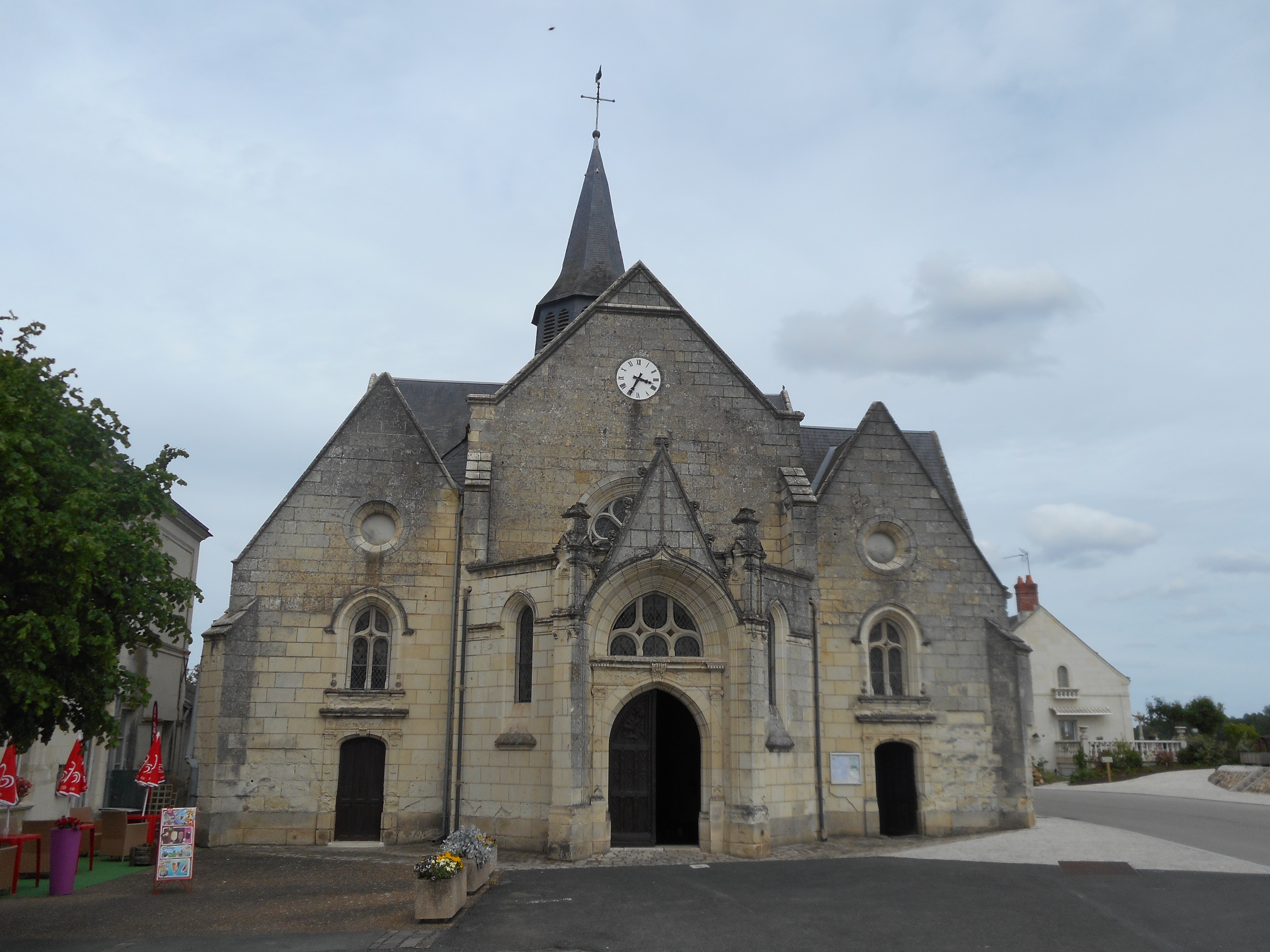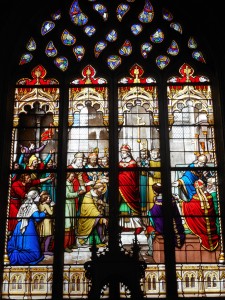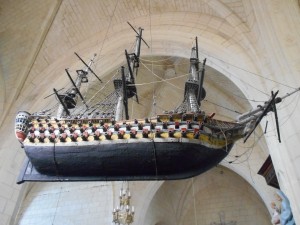Lors du transfert du corps du saint après sa mort à Candes et transporté sur la Loire en direction de Tours, les buissons des rives se seraient couverts de fleurs blanches. Cette abondante floraison de l’aubépine fit donner au chemin de la rive droite de la Loire le nom de « voie blanche », d’où proviennent les toponymes de « La Chapelle-Blanche » et du « Port-d’Ablevois » (alba via, « route blanche »). L’église fut sans doute édifiée par les chanoines de Saint Martin, car elle figure parmi les possessions de la collégiale citée en 1177. Détruite par une inondation en 1450, elle fut reconstruite par les chanoines au début du XVIe siècle. L’édifice fut restauré en 1693. Il possède un vitrail principal relatant l’ordination de Martin, évêque de Tours, le 4 juillet 371. L’église est inscrite aux monuments historiques le 9 août 1949.
Le vitrail se trouve dans le chœur à chevet plat de l’église de la Translation de saint Martin. Il a été réalisé en 1892. C’est une grande baie gothique flamboyant ferme presque la totalité du mur Ouest. Le vitrail qui l’occupe représente la consécration de saint Martin à l’évêché de Tours en 372. Saint Martin, nimbé, est agenouillé devant l’évêque. Autour d’eux, une foule de gens regardent la scène. En arrière plan, on peut distinguer des évêques. Dans le coin à gauche, on peut voir une femme agenouillée tenant un enfant entre ses bras et le soulever pour lui montrer la scène.
La maquette est un ex-voto réalisée en 1810 et est l’œuvre d’un marinier, qui se serait appelé Martin TERPEREAU, et restaurée de nombreuses fois, notamment en 1848 par Jean MERCIER. Cette maquette représente un vaisseau de guerre du XVIIIe siècle. C’est une maquette en bois de 200 × 230 cm qui est suspendue à la voûte du bas, côté sud de l’église de La Chapelle-sur-Loire.
Source Mérimée : PA00097637
When the body of the saint was transferred after his death in Candes and transported along the Loire towards Tours, the bushes on the banks were covered with white flowers. This abundant flowering of the hawthorn gave the road on the right bank of the Loire the name of « voie blanche », from which come the place names of « La Chapelle-Blanche » and « Port-d’Ablevois » (alba via, « white road »). The church was undoubtedly built by the canons of Saint Martin, as it is listed among the possessions of the collegiate church in 1177. Destroyed by a flood in 1450, it was rebuilt by the canons in the early 16th century. The building was restored in 1693. It has a main stained glass window showing the ordination of Martin, bishop of Tours, on 4 July 371. The church was listed as a historical monument on 9 August 1949.
The stained glass window is located in the flat choir of the church of the Translation of Saint Martin. It was made in 1892. It is a large flamboyant gothic window that closes almost the entire west wall. The stained glass window in it depicts the consecration of Saint Martin to the bishopric of Tours in 372. Saint Martin, wearing a nimbus, kneels before the bishop. Around them, a crowd of people are watching the scene. Bishops can be seen in the background. In the left-hand corner, a kneeling woman can be seen holding a child in her arms and lifting him up to show him the scene.
The model is an ex-voto made in 1810 and is the work of a sailor, who would have been called Martin TERPEREAU, and restored many times, notably in 1848 by Jean MERCIER. This model represents an 18th century warship. It is a wooden model of 200 × 230 cm which hangs from the lower vault on the south side of the church of La Chapelle-sur-Loire.

 "/>
"/>

